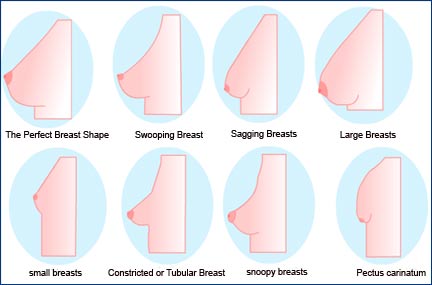Small Risk of Lymphoma Associated with Breast Implants
According to the World Health Organization, Breast Implant-Associated Anaplastic Large Cell Lymphoma (BIA-ALCL) is a T-cell lymphoma that can develop following breast implants (1). ALCL is a type of non-Hodgkin's lymphoma, a cancer of the cells of the immune system. It can occur in many different parts of the body, including the lymph nodes and skin. Even though BIA-ALCL is found in the breasts of some individuals (cis- and trans-gender women and men) with breast implants, it is not breast cancer. Considering the many thousands of breast augmentation with implants procedures that are performed every year in America (more than 290,000 in 2016, based on the Plastic Surgery Statistics Report 2016), the compiled data issued by the US Food and Drug Administration (FDA) show that there is a small risk of developing lymphoma. Approximately, 3 in 100 million women per year in the United States are diagnosed with ALCL in the breast, according to the Surveillance, Epidemiology, and End Results Program of the National Cancer Institute (SEER) (2). Because the risk of ALCL appears very small, FDA-approved breast implants continue to be considered safe and effective when used as labeled. Despite the likelihood that surgeons may never encounter a patient with this disease, we have a responsibility to educate ourselves and fully inform our patients about the potential risks of lymphomas associated with breast implants.
Breast augmentation with implants performed by Dr. De La Cruz.
Up to date, there is no certainty about the specific cause-and-effect relationship between breast implants and ALCL. Most data comprised in medical device reports, submitted to the FDA and published on September, 2017, suggest that BIA-ALCL occurs more frequently following implantation of breast implants with textured surfaces rather than those with smooth surfaces (3). Currently, it is not possible to identify a type of implant (silicone versus saline) or a reason for implant (reconstruction versus aesthetic augmentation) associated with a smaller or greater risk. Half of the reported cases were diagnosed within 7-8 years post-implantation. Moreover, most patients were diagnosed when they sought medical treatment for implant-related symptoms such as persistent seromas, capsular contractures, or peri-implant masses warranting breast implant revision operations (4). In each case, lymphoma cells were found in the effusion fluid (seroma) surrounding the implant, in the fibrous capsule, or within a peri-implant mass. Typically, there was no invasion beyond the fibrous capsule into the breast parenchyma. Because BIA-ALCL has generally only been identified in patients with late onset of symptoms such as pain, lumps, swelling, or breast asymmetry, prophylactic breast implant removal in patients without signs or symptoms is not recommended (5).
It is essential for patients to understand the importance of returning for follow-up visits since their plastic surgeon may be the specialist most knowledgeable about this rare disease process as well as the person most appropriate to coordinate the necessary evaluation and treatment. If you have ALCL around a breast implant, your doctor will discuss the best treatment options with you. The type of treatment depends on several factors, including: type of ALCL, stage of the disease, location of the cancer, your age and general health status. In many cases, surgical treatment by itself is sufficient to treat implant-associated ALCL. The main purpose of surgery for implant-associated ALCL is to remove the cancer and any inciting antigen that may be present stimulating the lymphoma. In cancers that are more difficult to treat, additional therapy such as chemotherapy or targeted agents may be required. Fortunately, BIA-ALCL tends to remain confined around the breast implant and most patients have a good prognosis when they receive the appropriate treatment.
References:
(1) Swerdlow, Steven. “The 2016 revision of the World Health Organization classification of lymphoid neoplasms”. American Society of Hematology. http://www.bloodjournal.org/content/127/20/2375?sso-checked=true
(2) Altekruse SF, Kosary CL, Krapcho M, Neyman N, Aminou R, Waldron W, Ruhl J, Howlader N, Tatalovich Z, Cho H, Mariotto A, Eisner MP, Lewis DR, Cronin K, Chen HS, Feuer EJ, Stinchcomb DG, Edwards BK (eds). SEER Cancer Statistics Review, 1975-2007, National Cancer Institute. Bethesda, MD, http://seer.cancer.gov/csr/1975_2007/, Table 19.28, based on November 2009 SEER data submission, posted to the SEER web site, 2010.
(3) “Breast Implant-Associated Anaplastic Large Cell Lymphoma (BIA-ALCL)”. U.S Food and Drug Administration.
(4) “Breast Implant-Associated Anaplastic Large Cell Lymphoma (BIA-ALCL)”. U.S Food and Drug Administration.
(5) “Anaplastic Large Cell Lymphoma (ALCL) In Women with Breast Implants: Preliminary FDA Findings and Analyses”. U.S Food and Drug Administration. http://wayback.archive-it.org/7993/20171115053750/https://www.fda.gov/MedicalDevices/ProductsandMedicalProcedures/ImplantsandProsthetics/BreastImplants/ucm239996.htm
(6) “Implant-Associated Anaplastic Large Cell Lymphoma Treatment”. The University of Texas MD Anderson Cancer Center. https://www.mdanderson.org/cancer-types/implant-associated-anaplastic-large-cell-lymphoma.html










